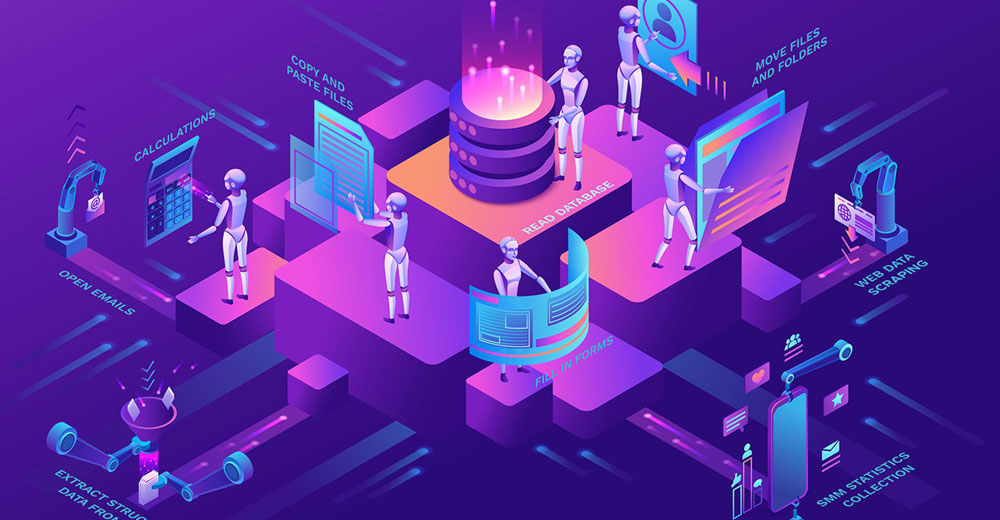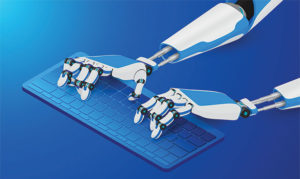With more amounts of data to manage, organize, and make sense of, robotic processes are becoming increasingly valuable to businesses seeking to save time and be more efficient.
Not everything needs to be done by a human, especially when the tasks are repeated and predictable. It’s here that robotic process automation (RPA) comes into play and has become an important component to managing businesses and serving customers.
TechNewsWorld spoke with several experts in robotic process automation to get their take on why it’s important, how it’s being used, and where it’s headed.
Multitude of Applications
“RPA is software that automates rules-based actions performed on a computer, such as copy and paste, moving files from one location to another, etc.,” Omid Aslani, director of product management for Kofax, explained to TechNewsWorld.
“Using low-code drag-and-drop software, RPA software ‘robots’ are designed to automate dull, boring, and repetitive tasks so that people can shift from being data-gatherers to data-users,” he added.
There are a many different applications for RPA, and it’s finding its way into a multitude of fields and kinds of businesses.
“The type of work that RPA can automate is almost endless, but examples include processing loan application data, automatic background checks, or extracting shipment details from incoming emails,” said Aslani.
“The ability to automate allows workers to switch their focus to more thoughtful and meaningful work while also eliminating data entry errors that can adversely impact processing times, compliance, and the overall customer experience,” he continued.
“In banking, tasks such as opening accounts or processing mortgage applications can be automated, while insurance companies can automate health and injury claims and onboarding for new applicants or agents. In the transport sector, supply chain and logistics operations can be streamlined with RPA.
“The list of possibilities is nearly endless and beneficial to any business that deals with laborious or tedious manual processes.”
Human-ish Robots
RPA requires, ultimately, that machines be trained in much the same way people would be to do a variety of repetitive and predictable tasks.
“Just like people, software robots can be trained to understand what’s on a screen, complete the right keystrokes, navigate different systems, identify and extract data, and perform a wide range of defined actions, such as pulling data from a database, entering it into a spreadsheet, and then generating an invoice based on the information,” Param Kahlon, chief product officer for UiPath, told TechNewsWorld.
With AI and natural language processing, RPA is able to progressively emulate human thought and processing capabilities, thereby making it useful to businesses that require a certain degree of intelligence in using and making sense of data.
“At its core, RPA is software automating business processes by interacting with multiple systems in the same way that a human would, often using the same desktop interfaces a human uses,” Don Schuerman, chief technology officer for Pegasystems, explained to TechNewsWorld.
“RPA increasingly leverages AI technologies like natural language processing (NLP) to interpret text or optical character recognition (OCR) to understand documents and images,” he continued. “An example of RPA includes what I often call an ’email bot,’ which uses NLP to understand and extract data from emails, and then automatically process and generate a response.”
RPA for Business Workflows
As systems become more complex, the way they can “think” about and process data is evolving. With this evolution is coming new and improved ways of making use of RPA’s unique capabilities.
“RPA has caught on like wildfire because it made automating routine, mundane tasks fast, easy, and dare I say, fun,” explained Aslani. “It made motivation-killing work, like monotonous, cut-and-paste data entry, a drudgery of the past.”
“Where does RPA go from here?” he questioned. “It’s all about workflow. The new normal is accelerating the call for digital transformation, creating streamlined, frictionless experiences that delight customers and employees.”
Part of this evolution involves harnessing RPA for a variety of systems within organizations.
“Organizations increasingly are bridging their RPA expertise to higher-value initiatives — business workflow transformation,” said Aslani. “Workflows are organizations’ secret sauce — the end-to-end processes encoding how they do things smarter, faster, better, cheaper.
“For savvy companies, the future is about harnessing their RPA automation expertise and leveraging it with complementary technologies like process orchestration and document intelligence to automate their mission-critical business workflows,” he reasoned.
“Additionally, there is a shift in utilizing more low-code capabilities, enabling citizen developers to develop automation and collaborate with professional developers to drive agility and speed in their digital workflow transformation journey,” Aslani noted.
Intelligent Automation
RPA is steadily becoming part of an entire business ecosystem, which includes work done by both humans and non-humans.
“For the last five or so years, RPA has enabled organizations in all sectors to increase efficiencies, streamline their internal and customer-facing processes, and, perhaps most importantly, free up their highly-skilled employees from repetitive, low-value work,” Eric Tyree, head of research and AI for Blue Prism, explained to TechNewsWorld.
“Now, as the technology matures and the early adopter phase is truly over, organizations are looking for more. We will see a seamless mix of digital workers, human workers, and ever-evolving systems,” he said.
Intelligent automation, in other words, is becoming perpetually intelligent.
“Business leaders are recognizing the potential for intelligent automation, where RPA technology is integrated with AI capabilities, to become a strategic lever for widescale transformation, innovation, and competitive difference.
“Organizations are starting with their big ambition and working backward from there. We’ll start to see significant numbers of organizations moving towards this automation-first approach,” said Tyree.
Ultimately, RPA can help businesses as a whole, as it frees up human employees to do things that humans do best — like thinking creatively and solving problems.
“RPA is evolving to become even more democratized, thereby unlocking automation’s potential at scale to transform the way people work,” said Kahlon. “With the rollout of more low-code and no-code solutions, those with less tech experience can increasingly harness the technology’s capabilities to optimize their workloads.
“Instead of relying on IT support, they can design their automation applications that make sense to their unique roles,” he reasoned. “The more employees who can take advantage of automation, the closer their organization comes to becoming a fully automated enterprise.”


























































